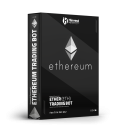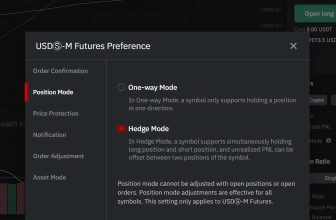Cryptocurrencies have become increasingly popular in recent years, with Bitcoin being the most well-known of them all. However, Ethereum has emerged as a significant player in the world of blockchain technology. Ethereum is unique because it not only has its own digital currency, Ether (ETH), but also utilizes smart contracts, which have revolutionized the way people do business.
This article will explore what Ethereum is, how smart contracts work, and why they have become a sensation.
Introduction to Ethereum and Smart Contracts
What is Ethereum?
Ethereum is a decentralized, open-source blockchain platform that allows developers to build decentralized applications (dApps) and smart contracts. It was created in 2015 by Vitalik Buterin, a Russian-Canadian programmer. Ethereum is powered by its native cryptocurrency, Ether (ETH), which is used to pay for transaction fees and computational services on the Ethereum network.
What are Smart Contracts?
Smart contracts are self-executing contracts with the terms of the agreement between buyer and seller being directly written into lines of code. They allow for trustless and transparent transactions without the need for intermediaries. Once the conditions of the contract are met, the contract is automatically executed.
Understanding Blockchain Technology
What is Blockchain Technology?
A blockchain is a decentralized, distributed ledger that records transactions across a network of computers. It is secure, transparent, and immutable, meaning that once a block is added to the blockchain, it cannot be altered or deleted.
How Does Blockchain Technology Work?
When a transaction is made on a blockchain, it is broadcast to a network of computers called nodes. These nodes validate the transaction and add it to a block along with other transactions. Once the block is full, it is added to the blockchain, creating a new block.
What Sets Ethereum Apart from Other CryptoCurrencies
Ethereum vs. Bitcoin
Bitcoin was the first blockchain platform and is primarily used as a digital currency. Ethereum, on the other hand, is a blockchain platform that allows for the creation of dApps and smart contracts. Ethereum is also faster and more efficient than Bitcoin, with faster block times and lower transaction fees.

Ethereum vs. Other Blockchain Platforms
Ethereum is not the only blockchain platform that allows for the creation of dApps and smart contracts. However, it is the most popular platform with the largest developer community and ecosystem.
Ethereum’s Founding Vision: A World Computer
What is Ethereum’s Founding Vision?
Ethereum’s founding vision is to create a decentralized world computer that can execute any program, regardless of its complexity. This would allow for the creation of decentralized applications and smart contracts that are trustless and transparent.
The Ethereum Virtual Machine (EVM)
The Ethereum Virtual Machine (EVM) is a runtime environment that executes smart contracts on the Ethereum network. It is a sandboxed environment, meaning that it is isolated from the rest of the network and cannot access external resources.
Gas: The Fuel for the EVM
Gas is the fuel used to pay for computational services on the Ethereum network. Each operation in a smart contract requires a certain amount of gas, which is paid for in Ether. Gas prices are determined by the demand for computational resources on the network.
How Do Smart Contracts Work?
A smart contract is a self-executing agreement with the terms of the contract directly written into code. They automatically enforce and execute the agreed-upon conditions when predetermined criteria are met, eliminating the need for intermediaries.
- Key Components of a Smart Contract
- Agreement: The terms and conditions between parties.
- Digital Signatures: Cryptographic signatures that verify the identity of the parties involved.
- Execution: Automatic enforcement and execution of the contract when conditions are met.
- Real-Life Smart Contract Use Cases
Some real-life use cases of smart contracts include supply chain management, insurance, digital identity verification, and asset tokenization.

Ethereum’s Native Cryptocurrency: Ether (ETH)
Ether (ETH) is Ethereum’s native cryptocurrency, which powers the platform and is used as a digital asset.
- Ether as a Digital Asset
Like Bitcoin, Ether can be bought, sold, and traded on various cryptocurrency exchanges. It’s also used for payments and as a store of value. - Ether’s Role in the Ethereum Ecosystem
Ether is essential for the execution of smart contracts and dApps, as it’s used to pay for the computational power required, known as “gas.”
The Ethereum Virtual Machine (EVM)
The Ethereum Virtual Machine (EVM) is a decentralized execution environment that allows smart contracts to run on the Ethereum network.
- Decentralized Execution of Smart Contracts
The EVM ensures that smart contracts are executed in a decentralized manner, with no single point of control or failure. - Gas: The Fuel for the EVM
Gas is a unit of measurement for the computational work required to execute a smart contract. It’s paid in Ether and ensures that the network remains secure and efficient.
Solidity: The Programming Language for Ethereum
Solidity is the primary programming language used to write smart contracts on Ethereum.
- Writing Smart Contracts in Solidity
Developers can write smart contracts in Solidity using various tools, like Remix or Truffle, which enable the creation, testing, and deployment of these contracts. - Deploying and Executing a Smart Contract
Once a smart contract is written and tested, it’s deployed to the Ethereum network, where it can be executed by interacting with its functions through a dApp or a wallet.

Decentralized Applications (dApps) on Ethereum
dApps are applications built on the Ethereum blockchain, leveraging its decentralized infrastructure and smart contracts.
- How dApps Function
dApps run on the Ethereum network and interact with smart contracts to execute their functions, enabling decentralized and trustless operations. - Popular dApps and Their Impact
Some popular dApps include Uniswap (decentralized exchange), Aave (lending platform), and CryptoKitties (collectible game). These dApps showcase the potential of Ethereum in revolutionizing various industries.
Decentralized Finance (DeFi) and Ethereum
Decentralized finance (DeFi) is an emerging financial ecosystem built on blockchain technology, particularly Ethereum.
- The DeFi Movement Explained
DeFi aims to provide open, transparent, and permissionless financial services, like lending, borrowing, and trading, without the need for traditional intermediaries like banks. - Ethereum’s Role in the DeFi Ecosystem
Ethereum’s smart contracts and dApps form the backbone of the DeFi ecosystem, enabling the creation of various financial products and services in a decentralized manner.
Ethereum’s Network Upgrades
Ethereum has undergone several network upgrades to improve its scalability, security, and sustainability.
- Ethereum 2.0: What to Expect
Ethereum 2.0 is a major upgrade that will transition the network from a proof-of-work (PoW) consensus mechanism to a proof-of-stake (PoS) mechanism, called “Eth2” or “Serenity.” - Proof of Work vs. Proof of Stake
PoW requires miners to solve complex mathematical puzzles to validate transactions, while PoS relies on validators who stake their cryptocurrency to propose and validate blocks. PoS is more energy-efficient, secure, and scalable than PoW.
Introduction to Ethereum Trading Bots
Ethereum trading bots are automated software programs that execute trades on behalf of users, based on predetermined strategies and algorithms.
What are Ethereum Trading Bots?
Ethereum trading bots are automated trading programs that execute trades on behalf of the user. They use algorithms to analyze market data and make trading decisions based on that data.
Related: What are crypto Trading Bots?

Why Use an Ethereum Trading Bot?
Ethereum trading bots can save traders time and effort by automating the trading process. They can also help traders make more informed trading decisions by analyzing real-time market data.
Factors to Consider When Choosing a Trading Bot
When choosing an Ethereum trading bot, it is important to consider factors such as its performance history, security features, and user interface. Traders should also consider the bot’s trading strategies and compatibility with their preferred exchange.
Best Ethereum Trading Bot
Ethereum Trading Bot
Coin Bot
Pros and Cons of Each Trading Bot
Each Ethereum trading bot has its own set of advantages and disadvantages. When choosing a trading bot, traders should consider factors such as the bot’s performance, security features, and user interface.
Tips for Using a Trading Bot Safely
When using an Ethereum trading bot, following the best security and risk management practices is important. Traders should use strong passwords, enable two-factor authentication, and regularly monitor their trading activity.
Conclusion: The Future of Ethereum and Smart Contracts
FAQs
What is the difference between Ethereum and Bitcoin?
While both are cryptocurrencies based on blockchain technology, Ethereum enables the creation of dApps and smart contracts, whereas Bitcoin primarily serves as a digital currency.
How can I get started with Ethereum?
To get started with Ethereum, you can create a digital wallet, purchase Ether on a cryptocurrency exchange, and explore dApps and smart contracts.
What are smart contracts?
Smart contracts are self-executing contracts with the terms of the agreement between buyer and seller being directly written into lines of code. They allow for trustless and transparent transactions without the need for intermediaries.
Will Ethereum 2.0 improve the network’s performance?
Ethereum 2.0 aims to significantly improve the network’s scalability, security, and sustainability by transitioning from a proof-of-work consensus m
What is the difference between Ether and Gas?
Ether is Ethereum’s native cryptocurrency, while Gas is a unit of measurement for the computational work required to execute a smart contract, paid in Ether.
Here are some links: ethereum.org







